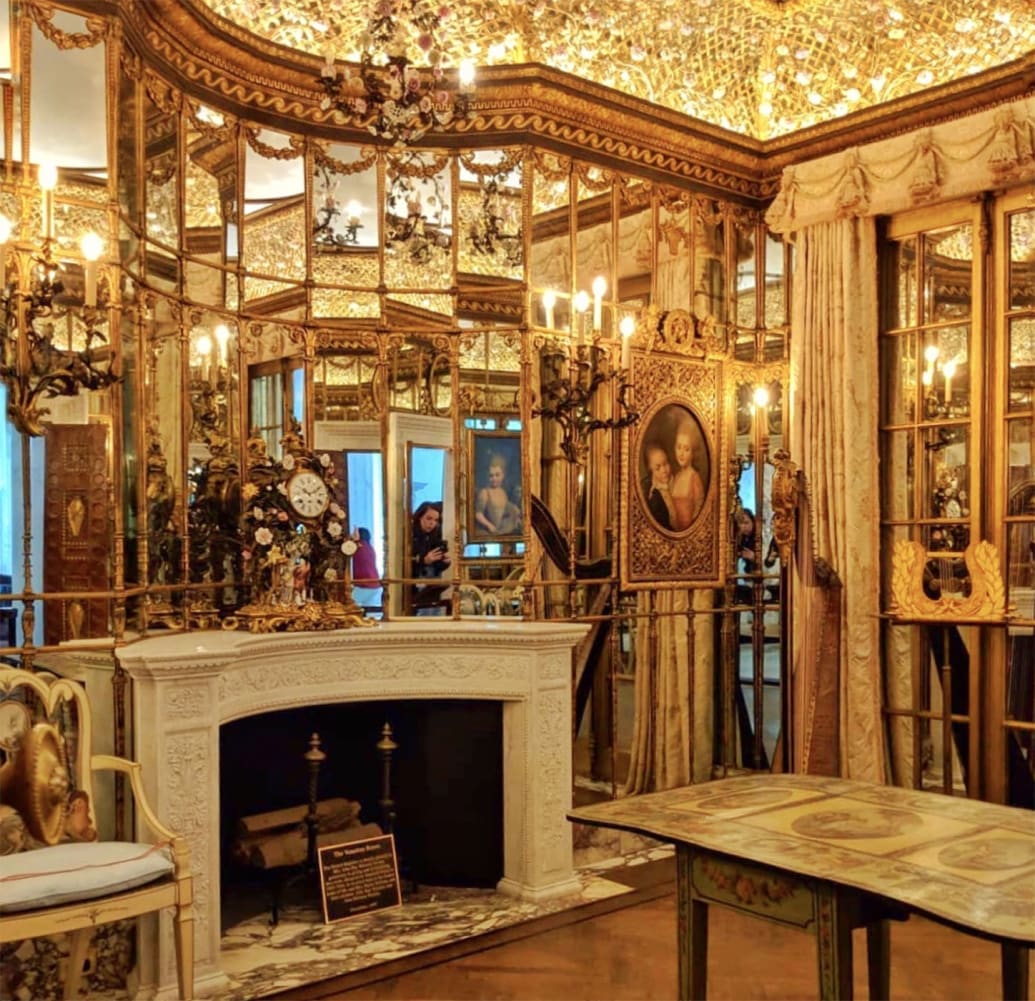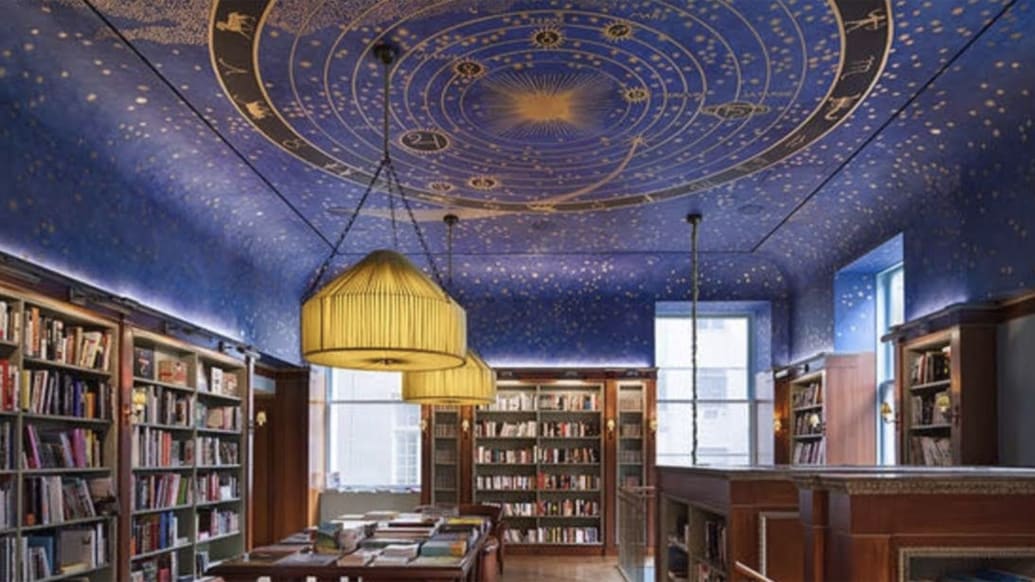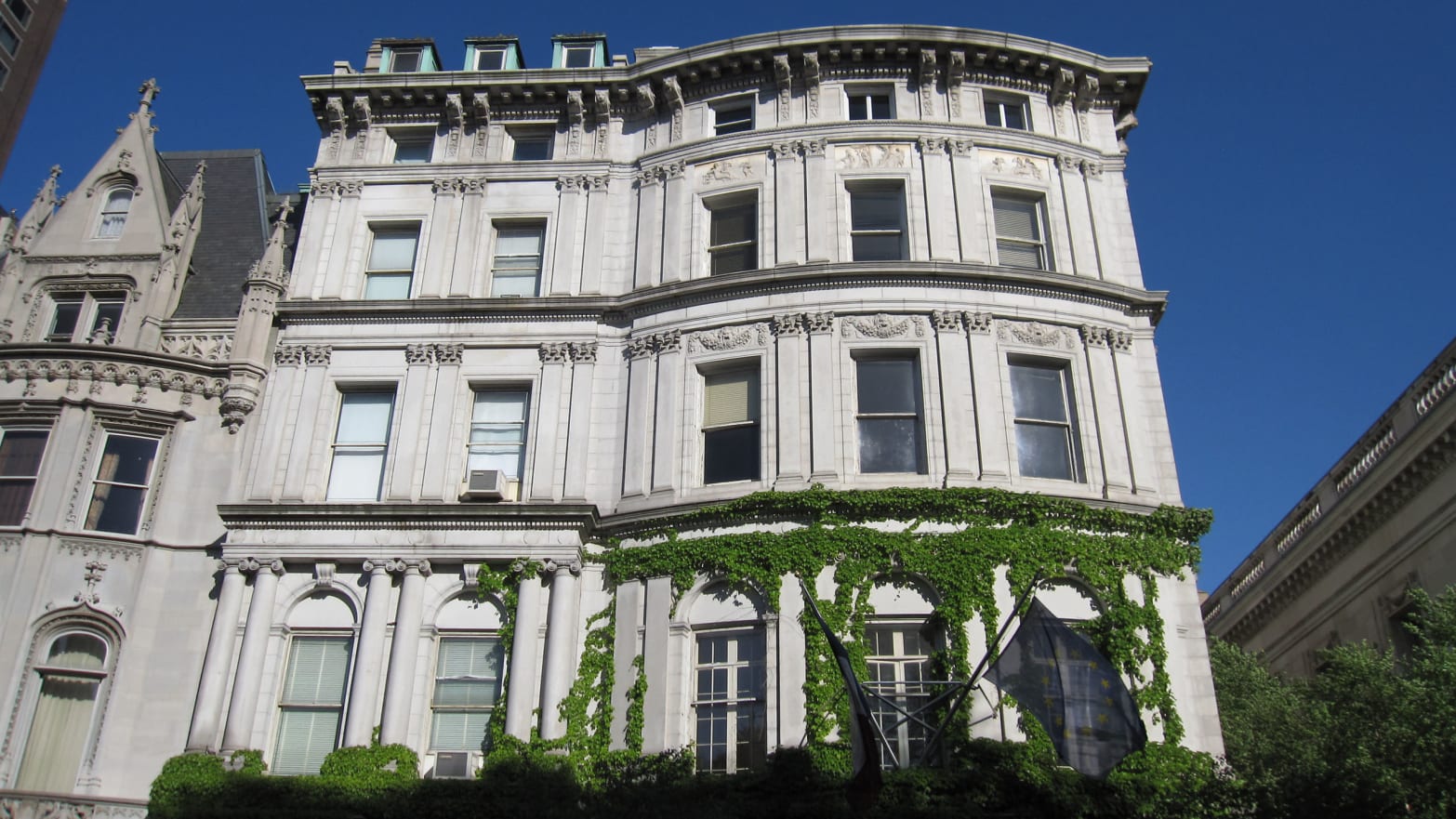The Payne Whitney Mansion on Manhattan’s Upper East Side is a case study in insecurity.
Some buildings and engineering marvels sum up the age in which they were built: The Golden Gate Bridge and Rockefeller Center tell you all you need to know about vaulting mid-century American ambition. Likewise, New York City’s Payne Whitney Mansion, staring across 5th Avenue at the Metropolitan Museum of Art, also defines a period of American history: that long moment between the Civil War and World War I when rich Americans fretted about their perceived lack of cultural identity and sophistication.
Built during the Gilded Age, the 5th Avenue marble mansions along Museum Mile on the Upper East Side were inhabited by the 1 percent of the 1 percent. Because castles and palaces are scarce in this country, the elite did what wealthy Americans always do: built brand new mansions and stocked them with paintings, sculpture, lyres, music stands, tapestries, and all sorts and styles of uncomfortable furniture from France and Italy. They were not discriminating—it just had to be old. A marble statue of a little archer was housed in the Payne Whitney house for decades before someone figured out that it was a genuine Michelangelo.

For the rich, it was not enough to be the kings and queens of industry. They wanted to be seen as such. How else do we explain something like the Venetian Room in the Payne Whitney House? Designed by the Gilded Age’s favorite architect and decorator, Stanford White, who also designed the mansion that contains it, the Venetian Room looks like Midas just walked through: mirrors and marble and porcelain from floor to ceiling, nearly all of it framed in gold or coated in gold leaf. It looks like a mini-mint, and its message is unmistakable: only people with more money than they know what to do with possess such an extravagant room.
Bought by France in 1952, the Payne Whitney mansion now houses the cultural services center of the French Embassy. While it regularly hosts lectures, films, performances, exhibits, and perhaps even your wedding reception, it’s not usually open for tours (the top floors, now mostly office space, are closed to the public). But even though only a few rooms have been fully restored to their original opulence, the house is very much worth a look, for the surprises uncovered during renovations and for some uniquely American touches. So if you get a chance to go, pounce.
I got in during “Open House New York,” the once-a-year chance to marvel at New York City architectural gems that are off limits, partially or entirely, for the rest of the year. An annual event since 2001, OHNY is a fantastic opportunity to explore art and architectural interests that are not listed in tourist itineraries and may not even be known or frequented by natives. This year’s city-wide open house took place October 12-14, so that ship has sailed. But mark your calendar for next year. Fall is a beautiful time for walking tours.
In 1902, Oliver Payne commissioned White to build the Beaux Arts mansion as a wedding gift for his nephew, Payne Whitney, and his new bride, Helen Hay. Approaching the five-story building today, one can see that the exterior takes its inspiration from 16th-century Italian architecture. The Italian Renaissance influence continues into the marble lobby, at least as long as the eye is trained toward the center of the room, at that little boy carved by Michelangelo that tops a small fountain (full disclosure: this statue is a copy—the original is now housed across the street at the Met). Glance at the room surrounding him, though, and it’s clear—culturally, artistically, esthetically—the Payne Whitney mansion is an American mess. But beautiful.
Originally the house stood alone on a plot of land in the newly developing Upper East Side overlooking Central Park, which is why it boasts grand windows that allow light to fill the rooms, a rarity in New York City then and now. The structure simply wasn’t hemmed in by neighbors. And, with the city expanding, architects were exploring newer ways to convey wealth.
For the Whitneys, White pulled out all the Beaux Arts stops. The house and decoration that resulted is busy as hell, with all the styles (Roman, Greek, Italianate, French neoclassical) vying for dominance in an uneasy balancing act. The architect was an artist at heart, but he was businessman enough to please his clients. His genius lay in applying both impulses to every detail. Before selecting the marble for the mansion, for example, White asked Oliver Payne what kind of marble was used in his childhood home, so White could connect the house not only to European aristocracy but also to family history.
The interior takes its cues from the Italian Renaissance. The details throughout—the capitals that top the columns, the molding, and trellises—were repeated throughout to give a sense of continuity and unity from room to room. White introduces these architectural elements in the immense marble foyer, where the boy stands inside a rotunda beneath a domed ceiling, or the illusion of a dome achieved with painted lattice crosses and overlapping green leaves that frame eight medallion paintings depicting children playing along the border. Like the Michelangelo sculpture, the painting, which had been covered with 70 years of dirt and soot, was an unexpected treasure revealed when the foyer was restored in 1987.
The room isn’t entirely faithful to the 16th century, and White used the 16 columns surrounding the dome as an enclosure to separate the receiving area from the narrow hall that leads to the rest of the house. White’s use of classical and Renaissance principles serve the purposes of privacy.
The Venetian Room, a parlor just off the main entrance hall, is a shift in style with its mirrored walls and gold accents, and might just be the most literal representation of the Gilded Age in New York City. Completed in 1906 just before White was murdered, the Venetian Room was his last contribution to the mansion, and, for that matter, his last professional creation. The lattice from the rotunda painting is echoed in the metal cornice with pastel porcelain flowers twining through it in the Venetian Room. Despite its name, the room looks like a miniature of Versailles’ Hall of Mirrors and evokes several centuries of French style. Its furnishings are a simulacrum of the aristocracy Americans were appropriating, and not without a little confusion. The clock on the mantelpiece dates from the era “of Louis XIV,” our guide said, “or Louis XV.” The furniture is 18th century French. Portraits from France and Italy from the 18th and 19th century bedeck the walls.
The Venetian Room was Helen Hay Whitney’s favorite room in the house where she lived from her wedding to her death in 1947. She loved the room so much that before she died she had it disassembled and stored to protect it. In 1997, it was reassembled and given to the French embassy, which had it reinstalled in its original home. The most recent restoration was completed this year, although unfortunately the original ceiling wasn’t salvageable. It’s now painted a neutral dove gray with faint clouds that are mostly indecipherable but do not detract from the magnificence of the assemblage.
Another gem revealed by the restoration process is a stained-glass window designed by New York-based John La Farge, one of the preeminent American designers of stained-glass of the late 19th century. For decades, the window, entitled Autumn, was hidden—and forgotten—behind a wall between the second and third floors (the exterior window remains bricked in, so no light passes through the glass). La Farge used opalescent glass, which contains an iridescent mineral that creates its milky texture, as well as double layers of glass to create subtle shades.
Our guide stopped at Autumn and gave some insight into why he believes it hangs where it does: “This is an interesting point of contact between Stanford White and Helen Hay in that it’s almost an artifact of both their rejected artistic ambitions. Stanford White, as a child, wanted to become an artist. He tells his father. His father is terrified, and says, ‘Go talk to John La Farge.’ John La Farge tells Stanford White, ‘I know you want to be an artist, but there’s no money in it. Nobody’s going to appreciate the arts in America. You should be an architect instead.’ As for Helen Hay, you can’t read it but the inscription at the bottom [on the plaque beneath the stained glass window] is from one of her poems. Before she got married, Helen Hay was very interested in being a poet, had several works published, which her father then promptly seized and had destroyed, because this wasn’t an acceptable thing to do. So I like to think of this window as a place where Stanford White is almost commiserating with Helen Hay to a certain degree.”
Interestingly, John La Farge, the artist, was aware of America’s insecurity about its identity. You can hear it in that advice he gave Stanford White. He knew that all the indigenous art that Americans could want—and celebrate as a culture unique to itself—isn’t good enough. There is still something within themselves that Americans deem provincial and unrefined, and so they embrace the history in which they play no part, because royalty is still the highest form of stature in life and it’s a concept not easily shed.
The last of the excavated treasures is also unequivocally American: a dress worn by Marilyn Monroe that was found in a wooden crate sitting in one of the storage rooms at the mansion. How it got there nobody knows, but we do know she wore it, because a writer researching a book on Monroe’s life discovered photographs of her in the dress. According to our guide, the labels on the crate indicate that “the dress was a direct shipment from France to America, to the French Embassy. Some people think there might have been an exhibit in Paris, some sort of Hollywood memorabilia, and it just kind of ended up here and disappeared. And then, there’s also this crate, which it’s paired with that says, ‘Milton Greene.’ Milton Greene was one of the eminent photographers of Marilyn Monroe’s time. As for as how it all actually ended up here—we’re still unsure.”
One of the public spaces in the mansion that you can visit at any time—and one of the best parts of the building, for my money—is the Albertine Bookstore, which opened in 2014 and occupies part of the first and second floors. It is, according to the Albertine website, “the only bookshop in New York devoted solely to books in French and English with more than 14,000 contemporary and classic titles from 30 French-speaking countries.”

Albertine, named for a character in Proust’s In Search of Lost Time, was designed by Jacques Garcia—known locally for the NoMad Hotel in Manhattan. He created the store’s rich, inviting interior with its wooden bookshelves, chandeliers, and sconces. The ceiling on the second floor is hand painted a beautiful, almost Atlantic blue with gold details that arabesque along the outer edges of the ceiling to become more concentrated and dynamic as they form a lyrical zodiac swirl that is consumed by a central sun. It’s a modern adaptation of Franz Von Stuck’s music room at the Villa Stuck in Munich. Because it is technically part of the embassy, the Albertine is not just culturally but literally part of France and therefore complies with the French law that book prices cannot be reduced by more than 5 percent. Fixed book prices protect a rich network of publishers and booksellers in France and nourish its “biblio-diversity.” The French are just more civilized when it comes to art and culture, and the spirit of supporting it.

